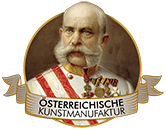Jean Leclerc, born in 1587 in Nancy, stands as a compelling figure within French Baroque painting. Amidst the cultural flourishing of Lorraine, he developed a style marked by a remarkable synthesis of Italian influences and French expressiveness. Leclerc’s artistic path was profoundly shaped by his uncle Jacques Bellange, whose mannerist visual language and dramatic use of light echo throughout Leclerc’s oeuvre. After formative years of study in Rome, where he closely engaged with the works of Caravaggio, Leclerc returned to Nancy, bringing the achievements of Italian naturalism into the artistic circles of Lorraine. His paintings, such as the renowned altarpiece "The Crucifixion" in the church of Saint-Sébastien, are distinguished by a powerful chiaroscuro technique that bathes figures in dramatic light and emphasizes their emotional depth. His compositions are dynamic, often charged with an almost theatrical tension, combining clear, almost sculptural drawing with a rich, luminous palette.
Leclerc’s oeuvre is dominated by religious themes, which he rendered with rare intensity and psychological sensitivity. His figures appear alive, their gestures and expressions narrating inner struggles and spiritual experiences. Particularly striking is Leclerc’s use of light as a narrative device: it not only models bodies but also guides the viewer’s gaze to the central moments of the scene. In his depictions of the Passion of Christ or the Holy Family, pathos and intimacy merge into a unique visual language that immediately touches the viewer. Leclerc’s influence on Lorraine painting is unmistakable - he introduced the achievements of Italian art to the region and inspired an entire generation of artists. His works, now found in museums and churches across France, testify to a profound religiosity and a masterful command of Baroque painting.
×




_-_(MeisterDrucke-1080738).jpg)
_-_(MeisterDrucke-1080738).jpg)
_-_(MeisterDrucke-1364521).jpg)
_-_(MeisterDrucke-1364521).jpg)
.jpg)
.jpg)
_-_(MeisterDrucke-1114155).jpg)
_-_(MeisterDrucke-1114155).jpg)
.jpg)
.jpg)
 - (MeisterDrucke-307763).jpg)
 - (MeisterDrucke-307763).jpg)
_-_(MeisterDrucke-325195).jpg)
_-_(MeisterDrucke-325195).jpg)
_in_Paris_on_22_March_1594_and_going_to_the_Cathe_-_(MeisterDrucke-991141).jpg)
_in_Paris_on_22_March_1594_and_going_to_the_Cathe_-_(MeisterDrucke-991141).jpg)
 - (MeisterDrucke-250260).jpg)
 - (MeisterDrucke-250260).jpg)
 - (MeisterDrucke-256603).jpg)
 - (MeisterDrucke-256603).jpg)






